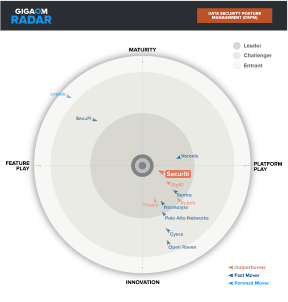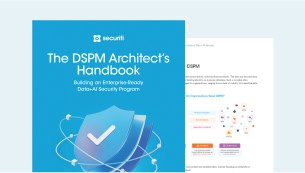Businesses need a comprehensive solution for protecting their data everywhere and building a unified Data Command Center that will extend beyond the scope of DSPM and ensure a future-proof approach to data security, governance, privacy, and compliance. Organizations need to start by looking at their data architecture and making sure it can uphold the following key tenants.
1. Ensure comprehensive data systems coverage across environments
At the enterprise level, DSPM is a critical step — but orgs need an even broader view of their data. Securing enterprise data at scale demands an extensive reach across all of your org’s systems, spanning cloud, on-prem, service-provider, and other third-party environments. Having the ability to discover all data (e.g., cloud, on-prem, PaaS, IaaS, SaaS, data in motion) across potentially hundreds of systems gives businesses a holistic view that empowers them to unlock contextual insights, harness those insights responsibly and efficiently, and facilitate informed decision-making.
2. Define taxonomies to create standardization
With comprehensive discovery at scale — even into dark data and shadow systems — organizations can gain a holistic view into all their data, unveiling the nuances within datasets and unlocking the ability to apply a common grammar and taxonomy to classification systems. Leveraging a standard taxonomy, orgs can unlock the context around data and understand it with great accuracy.
3. Unlock trustworthy contextual insights from data
Querying rich metadata using standardized frameworks ensures that the results derived from those queries are more accessible and trustworthy, enhancing the reliability of contextual data insights. Data teams can be confident about the contextual insights they unlock and ultimately achieve a high degree of data trust, fostering much-needed alignment across privacy, compliance, governance, IT, and security teams — and for the entire business.
4. Verify data controls
With contextual insight and increased trust in data, security teams can gain visibility into data intelligence and efficiently validate data controls across diverse environments that include private clouds, data clouds, SaaS applications, on-prem environments, and data in motion. This is key for adhering to multiple regulatory mandates for compliance.
5. Reduce risk due to misconfiguration
Configuration errors in cloud services are not uncommon, and they can derive from causes as diverse as rushed development and deployment to out-of-the-box automation to improper encrypting. Misconfigurations can leave sensitive data exposed and vulnerable to unauthorized access. With the data intelligence that comes from enhanced data trust, security teams can promptly identify and rectify misconfigured datasets — and efficiently prioritize the most critical ones that may contain sensitive information, minimizing security vulnerabilities, breach incidents, and other operational disruptions — and reduce false positives and alert fatigue by auto-remediating security violations at scale.
6. Govern access to your data
Enterprise security teams need to be able to manage internal access controls and ensure the least privileged access across the company. With unified data controls, they can gain granular insights into user permissions and access patterns, enforce stringent controls by dynamically masking sensitive data and enabling secure data sharing, and adhere to important compliance requirements across multiple global regulations.
7. Secure data flows
For a more comprehensive approach to privacy, security, and governance, teams across the enterprise need to be able to visualize how data moves between systems in order to accurately assess whether privacy and security controls apply consistently to the data. This involves the ability to track duplicates for remediation and trace data transformations across files.
8. Respond to data breaches promptly
In the event of a data breach or violation, efficient response management is key for compliance. The alternative can run up detrimental costs in penalties and fees, as well as damaged brand reputation. Enterprises that prioritize security risks by remediating the riskiest violations first will be in a better position to identify and remediate threats before they arise, as well as handle breaches in an efficient and compliant manner.
9. Enable hyper-scalability
Broad system coverage, coupled with contextual understanding, enables organizations to manage vast data volumes — even petabytes of data — seamlessly. This scalability empowers teams to analyze and utilize data efficiently, driving tangible business value and innovation.
Establishing a resilient data infrastructure that upholds these nine tenets is imperative for organizations to navigate the evolving data landscape successfully. By standing up a next-gen Data Command Center that brings all privacy, security, governance, and compliance challenges under the oversight of one unified system, businesses can fortify their data defenses, protect critical sensitive assets, drive operational efficiency, enhance brand trust, and unlock transformative insights for sustainable growth.












































